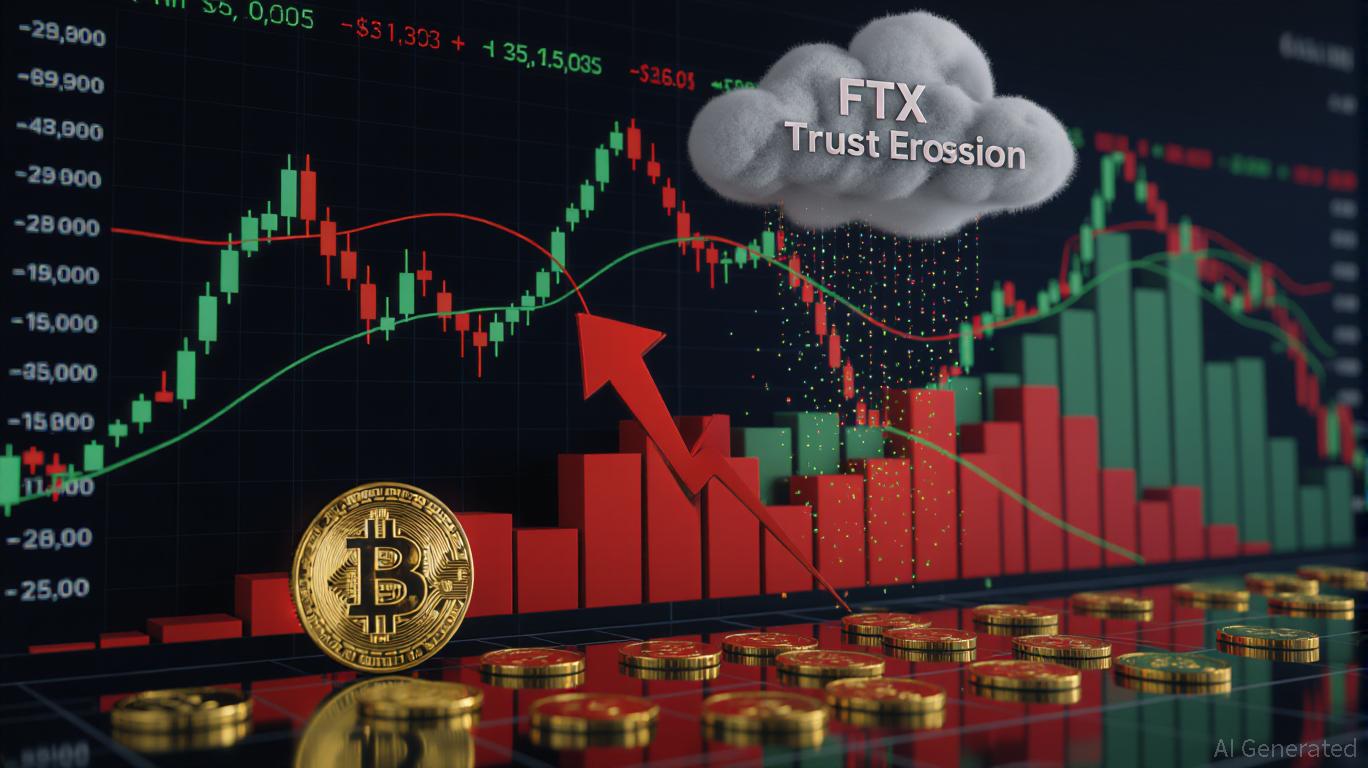ZK Technology Experiences Price Spike: Advances in Blockchain Scalability and Signs of Institutional Embrace
- Zero-Knowledge (ZK) technology's valuation surged in 2025 due to blockchain scalability breakthroughs and institutional adoption, with ZK rollups achieving 15,000 TPS and $3.5B total value locked. - Platforms like ZKsync and StarkNet enabled real-world applications (tokenized assets, AI contracts) while Deutsche Bank and Sony adopted ZK for confidential settlements and digital rights management. - Ethereum's zkEVM integration and regulatory clarity via U.S. acts accelerated institutional trust, with proj
The sharp rise in the valuation of Zero-Knowledge (ZK) technology has sparked considerable excitement among investors, fueled by major strides in blockchain scalability and growing interest from institutional players. As the cryptocurrency sector adjusts to the aftermath of the 2024 correction, ZK-powered solutions—especially
Scalability Breakthroughs: ZK Rollups as the New Infrastructure Layer
By 2025, Zero-Knowledge rollups reached a pivotal milestone, with platforms such as ZKsync and StarkNet achieving transaction speeds on par with conventional financial systems. The Atlas upgrade to ZKsync, released in October 2025, boosted its throughput to 15,000 transactions per second (TPS), marking a 300% improvement over 2023 figures
StarkNet has capitalized on its Cairo programming language to attract developers focused on ZK-centric applications in sectors such as gaming and finance. By October 2025, the combined total value locked (TVL) in ZK rollups (zkSync,

Institutional Adoption: From Confidential Settlements to Regulatory Clarity
Adoption of ZK technology by institutions has gained momentum as organizations look for privacy-focused solutions to meet compliance needs and facilitate international operations. Deutsche Bank and Sony have implemented ZK-based frameworks for secure settlements and digital rights management, using zero-knowledge proofs to confirm transaction authenticity without revealing confidential information
Ethereum’s deliberate move toward zkEVM integration at the Layer 1 level has further enhanced ZK’s attractiveness to institutions. By ensuring compatibility with existing
Price Surge Correlation: Technical and Economic Catalysts
The ZK token’s rally in the fourth quarter of 2025—reaching highs of $0.085–$0.090—is closely linked to these advances in scalability and adoption. The Atlas upgrade brought about 1-second finality and a deflationary token model, where transaction fees are used for buybacks and staking rewards. This structure has increased scarcity, fueling demand from both individual and institutional investors.
Additionally, forecasts for Ethereum’s Layer 2 expansion (projected to hit $90 billion by 2031 with a 60.7% compound annual growth rate
Challenges and Outlook
Despite these advances, obstacles persist. Integrating ZK solutions with legacy infrastructure in industries such as healthcare and manufacturing still demands further technological progress. Nevertheless, the emergence of Blockchain-as-a-Service (BaaS) platforms is easing this transition, allowing companies to implement ZK applications without a complete overhaul of their current systems
For investors, the main message is evident: the rise in ZK technology’s value is grounded in its ability to address real-world issues of scalability and privacy, rather than mere speculation. As institutional participation grows and Ethereum’s development continues, ZK rollups are set to underpin the next wave of financial and enterprise innovation.
Disclaimer: The content of this article solely reflects the author's opinion and does not represent the platform in any capacity. This article is not intended to serve as a reference for making investment decisions.
You may also like
The Unexpected Bitcoin Plunge in November 2025: Causes Behind the Drop and Future Prospects for Cryptocurrency Investors
- The November 2025 BTC crash resulted from Fed tightening, lingering FTX trust erosion, and institutional outflows. - Fed's hawkish liquidity controls and inflation focus created toxic conditions for Bitcoin's low-rate-dependent market. - FTX's unresolved $7.1B payouts and $20B institutional exodus since 2022 amplified panic selling through trust deficits. - Crypto investors must now wait for Fed policy clarity and prioritize transparent platforms with regulatory compliance.

Bitcoin Updates Today: Fed Navigates Uncertainty as December Rate Cut Remains Unclear
- Market expectations for a Fed rate cut in December dropped to 52% from 95% a month ago, reflecting deepening policymaker divisions. - Hawks like Collins emphasize inflation risks, while doves argue easing is needed to avoid restrictive policies amid weak labor data. - A government shutdown delayed critical economic reports, complicating decisions as structural shifts demand nuanced policy responses. - Bitcoin gains were capped by reduced cut odds, while broader markets remain sensitive to Fed signals on

Solana News Update: Solana’s Fast Network Draws $1.5 Billion in Stablecoin Growth as USDC and USDT See Significant Increases
- Circle mints $500M USDC on Solana , leveraging its 4,000 TPS speed and $0.002 fees to boost DeFi liquidity. - Solana's 2.4M active addresses and 83M transactions highlight its appeal as Ethereum's high-throughput rival. - Tether simultaneously issues $1B USDT on Ethereum , contrasting with Solana's retail-friendly low-cost model. - Institutional adoption grows via Solana Staking ETF and major firm participation, challenging Ethereum's upgrades. - $1.5B stablecoin surge reflects demand for cross-chain sta

Fed's Policy Direction Shifts: Balancing Prudence and Swift Action in Crucial December Decision
- Fed faces 52% market odds of 25-basis-point rate cut at Dec 10 meeting, down sharply from 95% a month ago amid internal divisions. - Key officials like Collins and Kashkari oppose further easing without clearer labor market deterioration or inflation control below 3%. - Government shutdown delays critical data, forcing policymakers to rely on incomplete information and private-sector indicators. - Uncertainty risks asset markets: Bitcoin stagnates near $103k while real estate and growth stocks face headw
